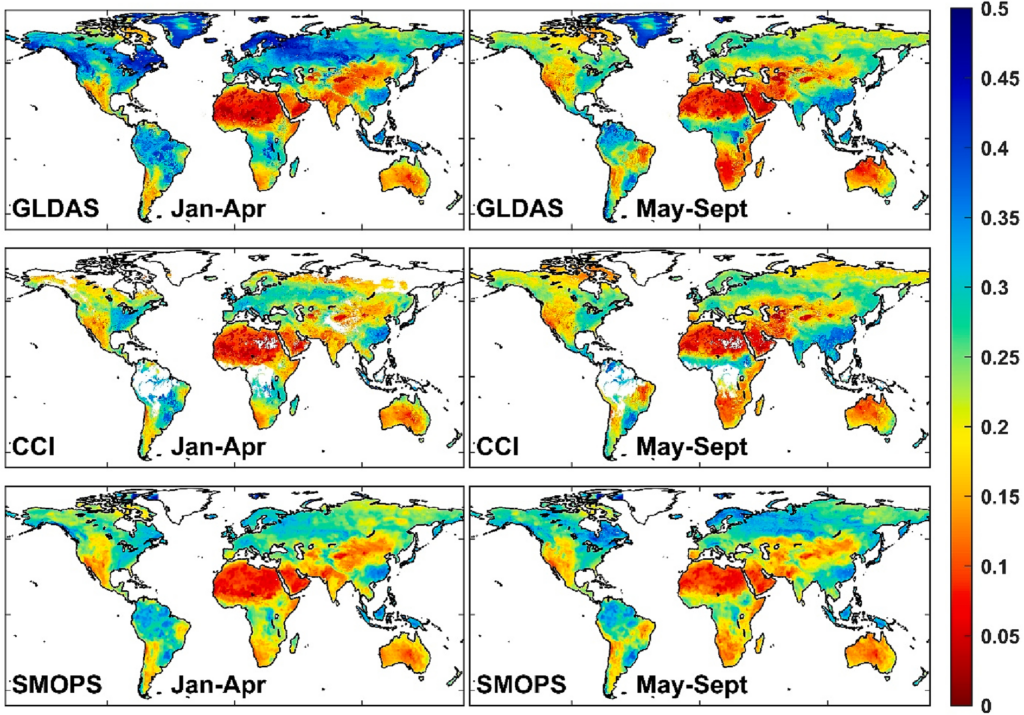Jifu Yin, Ralph Ferraro, and Jicheng Liu are authors on a new paper in Journal of Hydrology titled “Assimilation of Blended Satellite Soil Moisture Data Products to Further Improve Noah-MP Model Skills”. This study found that two different blended satellite soil moisture products had the potential to improve the Noah-Multi-Parameterization (Noah-MP) land model ability to track soil moisture changes and dynamic trends.
The researchers wanted to know whether the data assimilation of blended satellite soil moisture products would result in any improvement in Noah MP results compared to Global Land Data Assimilation System (GLDAS). They used two different blended satellite soil moisture products: one from the European Space Agency’s Climate Change Initiative (CCI) and the other from NOAA’s Soil Moisture Operational Product System (SMOPS). The figure below shows the differences among the three sources.

The researchers found significant improvement with assimilation of these two products. The improvements were not only in the topsoil layer but also in the deep soil layer. Relative to assimilation of GLDAS 0-10 cm estimations, Noah-MP model simulations with benefits of assimilating CCI and SMOPS are more successful to track SM changes and dynamic trends with respect to in situ measurements.
Yin is currently an Associate Research Scientist with University of Maryland’s Earth System Science Interdisciplinary Center. His research interests include data assimilation, drought monitoring, microwave satellite soil moisture retrievals and land surface model.
Ferraro is the Associate Director of ESSIC and former Chief of the NOAA/NESDIS Satellite Climate Studies Branch. Ferraro’s current research focuses on the use of environmental satellite remote sensing for both weather and climate studies with an emphasis on precipitation and other hydrological cycle products.
Liu is a Visiting Scientist with the NOAA-NESDIS. His current research interests include developing soil moisture retrieval algorithms using data from microwave satellite sensors.
To access the article, click here: “Assimilation of Blended Satellite Soil Moisture Data Products to Further Improve Noah-MP Model Skills”.






